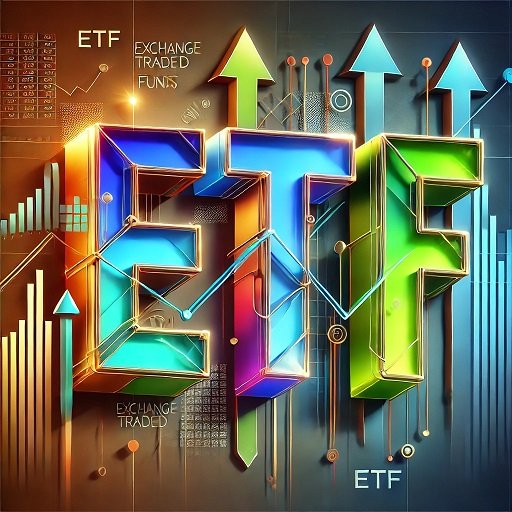Fixed Income Exchange-Traded Funds (ETFs) have emerged as a popular investment vehicle, blending the features of traditional bonds and the flexibility of ETFs. These funds are structured to deliver steady income while minimizing risk, serving as a fundamental component for investors aiming for stability in fluctuating markets. In this post, we’ll explore fixed-income ETFs, their benefits, risks, and how to incorporate them into a well-balanced portfolio.
What Are Fixed Income ETFs?
Fixed-income ETFs are investment vehicles that focus mainly on bonds and various debt securities. These exchange-traded funds are designed to replicate the performance of a designated index composed of bonds or particular fixed-income securities. Unlike individual bonds, which are bought and held until maturity, ETFs trade on stock exchanges, offering liquidity and real-time pricing.
Key Features of Fixed Income ETFs
- Diverse Bond Exposure: These funds can invest in government bonds, corporate bonds, municipal bonds, high-yield bonds, and more.
- Income Generation: Regular interest payments (coupon payments) from the underlying bonds are distributed as dividends to investors.
- Liquidity: As ETFs trade like stocks, they are more liquid compared to individual bonds.
- Transparency: Most exchange-traded funds (ETFs) make their holdings available to the public every day, giving investors the opportunity to know exactly what they own.
Types of Fixed Income ETFs
Fixed income ETFs cater to various investment goals, offering exposure to different types of bonds and risk levels.
- Government Bond ETFs
- Invest in sovereign debt, like U.S. Treasuries or other government bonds.
- Provides stability and safety, making them potentially ideal for investors who are risk averse.
- Examples: iShares 7-10 Year Treasury Bond ETF (IEF), Vanguard Total Bond Market ETF (BND).
- Corporate Bond ETFs
- Focus on debt issued by corporations.
- Enhanced returns compared to government bonds, albeit accompanied by a higher level of credit risk.
- Examples: iShares iBoxx $ Investment Grade Corporate Bond ETF (LQD).
- Municipal Bond ETFs (Muni ETFs)
- Invest in bonds issued by municipalities, often offering tax-exempt income.
- Suitable for investors in higher tax brackets.
- Examples: SPDR Nuveen S&P High Yield Municipal Bond ETF (HYMB).
- High-Yield Bond ETFs
- Comprise bonds from companies with lower credit ratings (junk bonds).
- Higher returns but significant risk.
- Examples: iShares iBoxx $ High Yield Corporate Bond ETF (HYG).
- Inflation-Protected Bond ETFs
- Focus on bonds that adjust for inflation, like Treasury Inflation-Protected Securities (TIPS).
- Hedge against inflation risks.
- Examples: iShares TIPS Bond ETF (TIP).
- Emerging Market Bond ETFs
- Investmenting in bonds that are provided by governments or corporations operating in emerging markets.
- Higher yields with exposure to geopolitical risks.
- Examples: iShares J.P. Morgan USD Emerging Markets Bond ETF (EMB).
Benefits of Investing in Fixed Income ETFs
- Diversification
Fixed-income ETFs allow you to own a portfolio of bonds across sectors, geographies, and credit qualities, reducing the risk tied to any single bond. - Cost Efficiency
ETFs typically have lower expense ratios compared to actively managed bond funds, which means more of your money works for you. - Ease of Access
Traditional bond investing often requires a large capital outlay and expertise. ETFs democratize this process, allowing fractional investments in a diversified bond portfolio. - Liquidity and Transparency
Unlike individual bonds, which can be illiquid and opaque, ETFs trade on exchanges with real-time pricing. - Consistent Income Stream
Regular interest income is passed through to ETF holders, making them a reliable source of passive income.
Risks Associated with Fixed Income ETFs
- Interest Rate Risk
Bond prices and interest rates are inversely related to one another. When interest rates rise, bond prices fall, potentially reducing the value of your ETF holdings. - Credit Risk
Some exchange-traded funds are designed to invest in bonds that carry lower credit ratings, resulting in a greater risk of default. - Liquidity Risk
While ETFs themselves are liquid, the underlying bonds may not be. In stressed markets, this can lead to price discrepancies. - Tracking Error
The performance of an ETF may deviate slightly from its benchmark index due to fees or market conditions. - Inflation Risk
Fixed-income securities may lose purchasing power if inflation outpaces the yield generated by the ETF.
Considerations for Selecting a Fixed Income Exchange-Traded Fund
- Investment Objective
- Are you seeking safety, income, or diversification?
- Match your goals with the ETF’s focus (e.g., government bonds for safety, high-yield bonds for income).
- Duration
- Determines how responsive the price of a bond is to changes in interest rates.
- Short-term ETFs are less sensitive to rate hikes but may offer lower yields, while long-term ETFs carry higher risk and potential returns.
- Expense Ratio
- Lower expense ratios enhance returns over time.
- Credit Quality
- Examine the credit ratings of the bonds held within the ETF. Higher-rated bonds are safer but offer lesser yield.
- Yield
- Analyze the ETF’s yield to gauge its potential for generating income.
- Liquidity and Volume
- Ensure the ETF trades with sufficient volume to avoid large bid-ask spreads.
Building a Portfolio with Fixed Income ETFs
Fixed-income ETFs can serve different roles depending on your financial goals:
- Core Portfolio Component
Use broad-based bond ETFs like the Vanguard Total Bond Market ETF (BND) as the foundation for balanced growth and stability. - Income Generation
For retirees or income-focused investors, consider high-yield or municipal bond ETFs for consistent cash flow. - Hedge Against Volatility
Add government bond ETFs as a safe haven during market downturns. - Diversification
Incorporate international or emerging market bond ETFs to expand exposure beyond domestic markets.
Top Fixed Income ETFs to Watch in 2025
Vanguard Total Bond Market ETF (BND): This ETF offers extensive exposure to the U.S. bond market, which includes corporate, mortgage-backed and also government securities. Characterized by minimal costs and extensive diversification, it is ideal for a core fixed-income holding.
iShares Core U.S. Aggregate Bond ETF (AGG): Follows the Bloomberg U.S. Aggregate Bond Index, which includes corporate, government, and mortgage-backed securities among other investment-grade bonds.
iShares 20+ Year Treasury Bond ETF (TLT): TLT invests mainly in the longer duration U.S. Treasury bonds. While offering stability and security, its performance is highly sensitive to changes in interest rates, making it an option for those anticipating a declining rate environment.
Vanguard Total International Bond ETF (BNDX): This fund diversifies geographically, investing in high-quality bonds from markets outside the U.S., hedged to the U.S. dollar to minimize currency risks.
iShares iBoxx $ Investment Grade Corporate Bond ETF (LQD): Focused on investment-grade corporate bonds, LQD targets higher yields than government bond-focused ETFs while maintaining relatively low risk.
SPDR Bloomberg High Yield Bond ETF (JNK): Focuses on high-yield (“junk”) corporate bonds, offering higher income potential but with increased credit risk.
iShares J.P. Morgan USD Emerging Markets Bond ETF (LEMB): Invests in local-currency bonds from emerging markets, providing exposure to developing economies.
| Ticker | Name | Dividend Yield^ | 2024 YTD | Weekly return | Monthly return | 2023 Return | 2022 Return | 2021 Return | 2020 Return |
|---|---|---|---|---|---|---|---|---|---|
| BND | Vanguard Total Bond Market Index Fund ETF | 3.52% | 3.17% | 0.06% | 0.76% | 5.65% | -13.11% | -1.86% | 7.56% |
| AGG | iShares Core US Aggregate Bond ETF | 3.58% | 3.06% | 0.01% | 0.72% | 5.65% | -13.02% | -1.77% | 7.23% |
| TLT | iShares 20 Plus Year Treasury Bond ETF | 3.95% | -1.56% | 0.24% | 1.84% | 2.77% | -31.24% | -4.60% | 16.57% |
| BNDX | Vanguard Total International Bond Index Fund ETF | 4.75% | 4.57% | 0.19% | 1.52% | 8.77% | -12.76% | -2.28% | 4.41% |
| LQD | iShares iBoxx $ Inv Grade Corporate Bond ETF | 4.35% | 3.79% | 0.16% | 0.80% | 9.40% | -17.93% | -1.84% | 10.71% |
| JNK | SPDR Bloomberg High Yield Bond ETF | 6.53% | 8.60% | -0.05% | 0.25% | 12.41% | -12.20% | 3.99% | 4.94% |
| LEMB | iShares J.P. Morgan EM Local Currency Bond ETF | 1.33% | -0.49% | -0.41% | -1.08% | 7.22% | -10.73% | -9.91% | 3.22% |
^ From yahoo finance, as of 3rd Dec 24
Conclusion
Fixed-income ETFs are a versatile tool for investors seeking steady income, diversification, and reduced volatility. Whether you’re a conservative investor prioritizing safety or a risk-tolerant individual chasing higher yields, there’s likely a fixed-income ETF that aligns with your goals.
By understanding the nuances of these funds—such as types, benefits, and risks—you can make informed decisions and build a resilient portfolio. Remember to evaluate your financial objectives, risk tolerance, and market conditions before investing in any fixed-income ETF.
If you’re new to fixed-income investing or seeking to enhance your strategy, consult a financial advisor to tailor an approach that best suits your needs.




